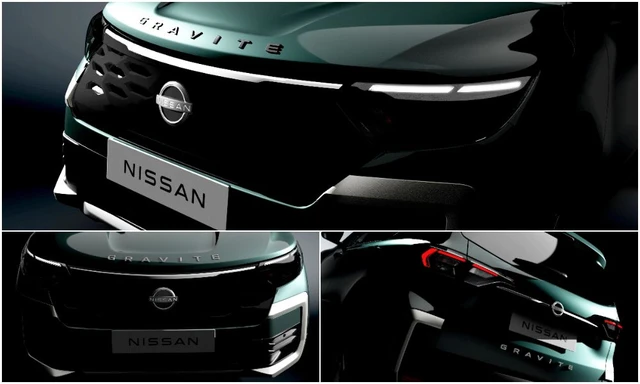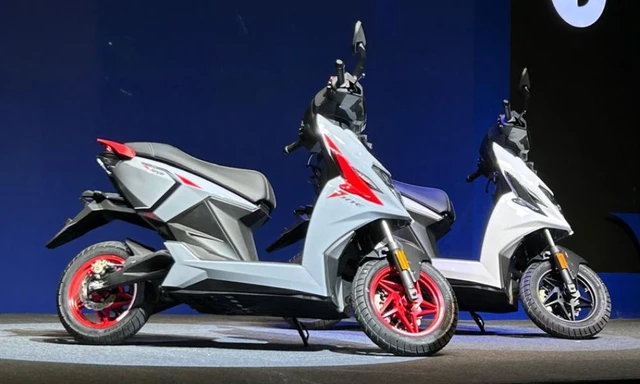Budget 2017-18: Impact On The Indian Automotive Industry

- The two large initiatives are rural and infrastructure development
- There's an allocation of Rs 64,000 Crore for highway development
- Tax cut will see disposable income in hands of buyers
The Society of Indian Automobile Manufacturers or SIAM has always lobbied for the same, but now with the Goods and Services Tax or GST promised to arrive soon, there was no scope for any excise or other duty to be tweaked. So to be honest the auto industry expected nothing that was specific to the sector itself - barring a log standing expectation that there will be huge incentives to bring in more environmentally friendly vehicles - electric or hybrid - to India. That has not happened. So the reactions are mixed.
So has there been any cheer for the industry at all? Yes - and in fact in a big way. Budget 2017-18 has laid out a very clear set of themes. The two large initiatives are aimed at putting more money into the rural economy - especially after demonetisation; and a renewed focus on infrastructure development. The latter sees a marginally higher allocation of Rs 64,000 Cr for highway development in particular. Another item that has seen mention in previous budgets and sees clarity is the specific outlay for the development of coastal roads -for better connectivity to ports and coastal villages. Under the Pradhan Mantri Gram Sadak Yojna roads work accelerated to 133 km roads per day in 2016-17 against 73 km per day during 2011-14. These allocations will be good news for makers of heavy machinery and construction equipment like JCB or Tata Hitachi; and also CV makers like Tata and Ashok Leyland.
But it is the farm-friendly policies like that the Finance Minister has announced that will really benefit the auto sector. This is even truer in the case of manufacturers of farm equipment like Mahindra and Tafe. Allocation for rural sector for Fiscal Year 2018 is Rs 1,87,200 cr, which is a record, and represents an increase of 24 per cent In fact the allocation under MNREGA increased from Rs 38,500 crore to Rs 48,000 crore. And it will no doubt benefit the two wheeler brigade that sees a chunk of sales coming from Tier 3 towns and rural India, like Hero and HMSI. Pawan Munjal, Chairman and Managing Director, Hero MotoCorp, said "Clearly government spending in schemes such as MNREGA & Pradhan Mantri Awas Yojna is highest-ever. This is a boost for core sectors such as rural, agriculture, steel, manufacturing etc..., and will convert into increase in consumption in rural India."
After all the primary impact of demonetisation on the auto industry was really seen on rural sales. These measures will help overcome some of that. YS Guleria, Senior VP- Sales & Marketing, HMSI said, "With almost 50% of two-wheeler demand coming from rural and semi-urban India, Budget 2016 should have a positive impact for the industry going forward." The rural thrust is also good news for makers of LCVs and mini trucks like Eicher, Tata and Mahindra for the same reason, as this also comes on the back of a good monsoon, and reasonably good earnings in the agro-economy.
Roland Folger, MD & CEO, Mercedes-Benz India says, "This budget tries to narrow the gap between rural and urban India. By allocating a greater amount to transportation, airports and highways, the focus will be greater on infrastructural development. This will help the auto sector's growth during the long-term."
Minister Jaitley's tweaking of tax slabs will also likely benefit the two wheeler sector, as income below Rs 2.5 lakh is now non taxable, and income between Rs 2.5-5 lakh now sees the tax outgo halved to 5%. This means more disposable income in the hands of several buyers. Now that will surely not translate into a rush of people heading into bike showrooms, but it will allow more to hasten their purchase decisions. It is also likely to spur demand for second hand two wheelers and cars, which would have a positive impact on new vehicle sales too.
Even the car makers are expecting a positive push to sales though. The Income tax rate cut from 10% to 5% for individual tax payers earning under Rs. 5 lakh per annum will create a positive sentiment among likely first time buyers for entry level and small cars. However, there is nothing substantial for R&D for automotive industry, EV and Hybrid vehicles, which is a dampener. We look forward to the implementation of GST for the automotive sector in the months to come to offer the much needed stimulus to the auto industry and encourage buyer sentiment and consumer confidence." said Guillaume Sicard, President, Nissan India.
The auto industry is disappointed that its long-standing demand for incentive-based fleet modernization has no mention in the budget. But on the whole the industry is pleased - since the last few budgets have brought no incentives for the sector anyway.
Latest News
 Jaiveer Mehra | Jan 6, 2026Mahindra XUV 3XO EV Launched In India; Prices Start At Rs 13.89 LakhEssentially the successor to the XUV 400 EV, the 3XO EV is offered in two trim levels and solely with a 39.4 kWh battery.1 min read
Jaiveer Mehra | Jan 6, 2026Mahindra XUV 3XO EV Launched In India; Prices Start At Rs 13.89 LakhEssentially the successor to the XUV 400 EV, the 3XO EV is offered in two trim levels and solely with a 39.4 kWh battery.1 min read Jaiveer Mehra | Jan 6, 2026Nissan Tekton SUV World Premiere On February 4The Tekton will make its debut hot on the heels of the Gravite and will share its platform with the upcoming new Duster.1 min read
Jaiveer Mehra | Jan 6, 2026Nissan Tekton SUV World Premiere On February 4The Tekton will make its debut hot on the heels of the Gravite and will share its platform with the upcoming new Duster.1 min read car&bike Team | Jan 6, 2026New Bajaj Chetak With Hub Motor To Be Launched On January 14Expected to be positioned as a more affordable derivative of the iconic Bajaj scooter, the newest member of the Chetak family will be targeted at the TVS Orbiter and Vida VX2.2 mins read
car&bike Team | Jan 6, 2026New Bajaj Chetak With Hub Motor To Be Launched On January 14Expected to be positioned as a more affordable derivative of the iconic Bajaj scooter, the newest member of the Chetak family will be targeted at the TVS Orbiter and Vida VX2.2 mins read Jaiveer Mehra | Jan 6, 2026Nissan Gravite MPV To Debut On January 21B-segment MPV to share its underpinnings and powertrain options with the Renault Triber.1 min read
Jaiveer Mehra | Jan 6, 2026Nissan Gravite MPV To Debut On January 21B-segment MPV to share its underpinnings and powertrain options with the Renault Triber.1 min read Jaiveer Mehra | Jan 6, 2026Mahindra XUV 7XO Prices, Variants ExplainedFacelifted SUV is offered in a choice of six variants and with petrol and diesel engine options.1 min read
Jaiveer Mehra | Jan 6, 2026Mahindra XUV 7XO Prices, Variants ExplainedFacelifted SUV is offered in a choice of six variants and with petrol and diesel engine options.1 min read car&bike Team | Jan 5, 2026Updated Simple One Electric Scooter Launched At Rs 1.50 Lakh; 5 kWh Variant Promises Up To 265 KM RangeWith a series of changes made to the existing scooter, the start-up claims to have improved range, top speed as well as on-road behaviour of the Simple One.1 min read
car&bike Team | Jan 5, 2026Updated Simple One Electric Scooter Launched At Rs 1.50 Lakh; 5 kWh Variant Promises Up To 265 KM RangeWith a series of changes made to the existing scooter, the start-up claims to have improved range, top speed as well as on-road behaviour of the Simple One.1 min read
 Amaan Ahmed | Jan 3, 2026VLF Mobster 135 300 KM Review: Fun But FlawedA 125 cc scooter with Italian design and Chinese genes is a rare combination, and while some may be tempted to dismiss it because of its origins, the VLF Mobster shows 125s can also be exciting – but not without compromises.11 mins read
Amaan Ahmed | Jan 3, 2026VLF Mobster 135 300 KM Review: Fun But FlawedA 125 cc scooter with Italian design and Chinese genes is a rare combination, and while some may be tempted to dismiss it because of its origins, the VLF Mobster shows 125s can also be exciting – but not without compromises.11 mins read Preetam Bora | Dec 30, 2025TVS Orbiter Review: Real-World Performance and Range TestedThe TVS Orbiter is a promising electric scooter promising decent range, practicality and pricing. But is there any reason to avoid it? We spent a few days getting to know it better.9 mins read
Preetam Bora | Dec 30, 2025TVS Orbiter Review: Real-World Performance and Range TestedThe TVS Orbiter is a promising electric scooter promising decent range, practicality and pricing. But is there any reason to avoid it? We spent a few days getting to know it better.9 mins read Jafar Rizvi | Dec 24, 2025MG Windsor EV 38 kWh Long-Term Report: IntroductionThe Windsor EV has joined our garage, and before it settles into daily duty, I took it out to get a sense of what living with an electric car is like.4 mins read
Jafar Rizvi | Dec 24, 2025MG Windsor EV 38 kWh Long-Term Report: IntroductionThe Windsor EV has joined our garage, and before it settles into daily duty, I took it out to get a sense of what living with an electric car is like.4 mins read Seshan Vijayraghvan | Dec 23, 20252026 Kia Seltos Review: Formula Is Spot On, But Is The Timing Right?The 2nd-gen Kia Seltos has arrived, but it has the challenge of facing strong rivals like the Victoris and Sierra. The question is simple - Does it still have what it takes?9 mins read
Seshan Vijayraghvan | Dec 23, 20252026 Kia Seltos Review: Formula Is Spot On, But Is The Timing Right?The 2nd-gen Kia Seltos has arrived, but it has the challenge of facing strong rivals like the Victoris and Sierra. The question is simple - Does it still have what it takes?9 mins read car&bike Team | Dec 26, 2025Tata Punch EV Long-Term Second Report: Highway Performance, Pros & ConsAfter a week of living with the Tata Punch EV Long Range—including a proper Mumbai-Nashik highway test—we've learned what this little electric SUV is really made of.1 min read
car&bike Team | Dec 26, 2025Tata Punch EV Long-Term Second Report: Highway Performance, Pros & ConsAfter a week of living with the Tata Punch EV Long Range—including a proper Mumbai-Nashik highway test—we've learned what this little electric SUV is really made of.1 min read



















































































































